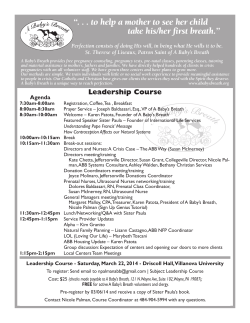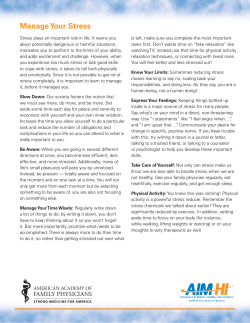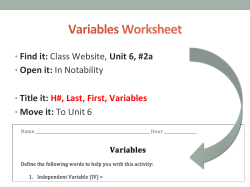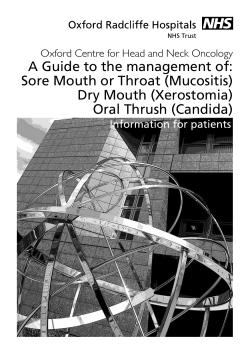
Bad Breath: An Embarrassing Problem Fact Sheets for Families
Fact Sheets for Families Bad Breath: An Embarrassing Problem Bad breath, also called halitosis or malodor, is breath that has an unpleasant or offensive smell. It can be an embarrassing problem with social consequences for children and parents. Children are usually unaware of the problem unless told by others. dehydration, sleeping, salivary gland disease and taking certain medicines. The following are other causes of bad or changed breath: • Everybody has bad breath from time to time, especially first thing in the morning (morning mouth). While this type of bad breath is considered to be somewhat normal, other types may be related to health problems. Children as young as 2 years can have bad breath. Incidence increases with age. Eating food with a strong odor. What you eat can also affect the air you breathe out. For example garlic and onion can be absorbed into the bloodstream, transferred to the lungs where they affect the air you breathe out through your mouth and nose. • Illnesses and medical problems. Bad breath can also be caused by liver and digestive system problems, lung disease, diabetes and medications. What causes bad breath? When to call the health care provider? The following are the major causes of bad breath from the oral source: How is bad breath treated? Who gets it? Many things can cause bad breath. It can originate either from oral or non-oral sources. Some reports indicate that about 87% can originate from an oral source and 13% from non-oral sources. • Poor oral hygiene. Lack of proper hygiene and toothbrushing can leave food particles inside the mouth. Bacteria in the mouth degrade protein materials, produce amino acids and offensive gases. • Mouth and throat problems. Throat and mouth infections such as strep throat, thrush or yeast infections, tonsillitis, dental caries and gum disease can cause bad breath. • Problems with the nose. Sinus infections, nasal polyps or foreign objects placed in the nose by children can also cause bad breath. • Decrease in saliva and dry mouth. Saliva is very important for its cleaning role that helps reduce or get rid of bacteria and bad breath. Dry mouth or a decrease in saliva may be due to mouth breathing, Provided by California Childcare Health Program For more information, please contact: Healthline 1-800-333-3212 Distributed by: If your child has bad breath with swollen and painful gums, loose teeth, sore throat, fever, postnasal drip; or the bad breath continues even with proper dental hygiene and nutrition, seek help from your healthcare provider. The treatment of bad breath depends on its cause. Regular dental checkups will help to detect problems that can lead to bad breath. The following tips will help to improve bad breath: • Promote oral hygiene and dental care. Children, like adults, should brush their teeth with fluoride toothpaste twice a day: after breakfast and before bedtime at night. • Children need an adult’s help in brushing their teeth until they are 8 years old. • Children should see a dentist by their first birthday. • Pay attention to your child’s diet. Provide a low-fat diet rich in fruit and vegetables. • Provide enough liquids to keep the mouth moist and well hydrated. • Treat underlying medical conditions For additional information please, call the toll free Child Care Healthline at (800) 333-3212 or visit our Web site at www.ucsfchildcarehealth.org. by A. Rahman Zamani, MD, MPH 10/06
© Copyright 2025





















